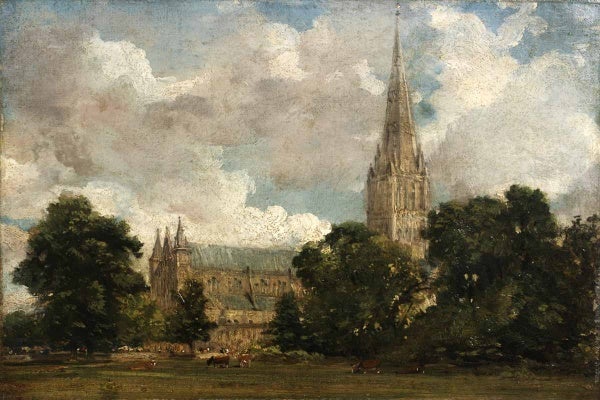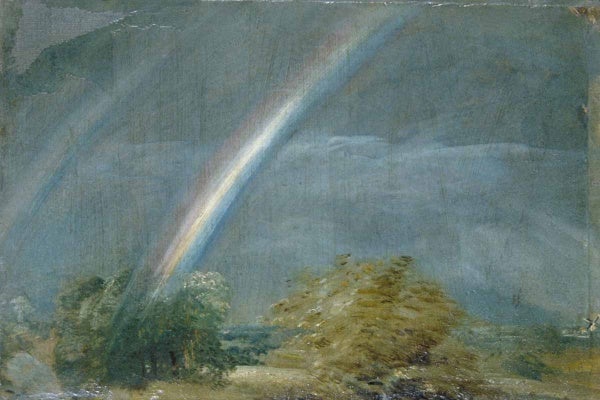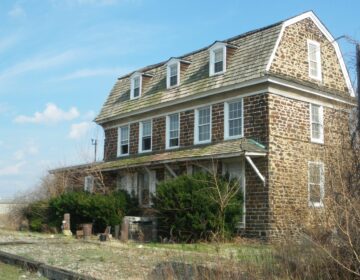The ‘sparkling’ work of John Constable on view in rare Princeton University exhibit
Years after beloved English painter John Constable’s death, his daughter Isabella donated many of his oil sketches directly to the Victoria and Albert Museum in London. Constable never meant for them to be shown, but his paintings have now made it to the United States and are featured in a rare exhibit at the Princeton University Art Museum, the first of only two galleries in North America to show them.
The museum’s “John Constable: Oil Sketches from the Victoria and Albert Museum” features 85 oil sketches in an exhibit on view until June 10.
Through a partnership with the Victoria and Albert Museum, the exhibit highlights the artist’s major contribution to the art world. It’s the second exhibition in which the Princeton University Art Museum has partnered with the Victoria and Albert Museum to present art that American museumgoers would not typically be able to see.
Full-sized oil sketches for famous paintings such as “The Hay Wain,” which now resides at The National Gallery, and “The Leaping Horse,” are now on exhibit for the first time in the United States.
These two oil sketches have been at the Victoria and Albert museum for over 150 years. They were cleaned for the first time, revealing the subtlety of their tonalities and color.
“They just sparkle,” said Calvin Brown, Associate Curator for the Princeton University Art Museum.
Brown says that Sir Kenneth Clark, renowned British art historian, called “The Hay Wain” and “The Leaping Horse” oil sketches “the finest paintings ever made in England.”
When painting his landscapes, Constable applied vivid, open brushwork to capture natural impressions of his native countryside.
“His method of painting strongly resembles what French artists would be painting in the 1870s,” Brown said, and therefore many consider Constable, although he is an English painter, to have been the predecessor of the French Impressionist movement.
Brown says Constable would go out to paint in the fields, creating oil sketches to acquire a sense for the overall light and balance he would employ in the finished picture. He was one of the first artists to paint exclusively in the fields, en plein air, to concentrate so heavily on painting directly from nature.
As his expertise grew, Constable devised a rapid-fire style of painting short, intensely colored brushstrokes to capture the effect of changing light and movement in his landscapes and to paint the atmospheric effects as he saw them.
Thomas Gainsborough and Claude Lorrain, who were also landscape painters, were considered to be Constable’s major influences. But unlike Lorrain, Constable wanted to paint the world as he knew it from his childhood.
“The context of Constable’s art came at the end of the British Age of Enlightenment,” said Brown, “a period of scientific discovery which saw an explosion in the understanding of natural sciences based on field observation rather than academic principle, with the beginnings of geology and cataloging of birds and plants as they exist in nature.”
Constable lived in the same period as Darwin, at a time when Joseph Priestly had just discovered oxygen and its essential role in supporting life. Constable’s intense belief in observing nature was born out of this branch of natural philosophy and study of the environment.
In 1824, when “The Hay Wain” was shown at the Paris Salon, winning a gold medal, Constable’s style excited young French artists such as Eugène Delacroix, who later visited him in London. With his unique painting method and naturalist themes, Constable was crucial to the Romantic Movement as it grew in France.
His influence extended to the Barbizon school, which included Jean François Millet, Constant Troyon, and Theodore Rousseau, inspiring young French artists to start painting en plein air in the Fontainebleau forest. In turn, the Impressionists built their foundation upon the Barbizon school, providing a connection from Constable to Monet some 50 to 60 years later.
The exhibition even includes Monet’s “Houses of Parliament” to highlight the Impressionists’ debt to Constable.
His impact was profound for an artist who never left England and painted the minutiae of nature. As Constable himself put it, “I associate my ‘careless boyhood’ to all that lies on the banks of the Stour. They made me a painter, and I am grateful.”
WHYY is your source for fact-based, in-depth journalism and information. As a nonprofit organization, we rely on financial support from readers like you. Please give today.










